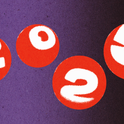© Heide Benser/Corbis
Teenagers often get a bad press. There are easy stories to be mined here: ASBOs, underage drinking, “hug a hoodie,” drug use—even, recently, the teenager who drugged her parents to access the internet.
These are not new stereotypes. As a shepherd in Shakespeare’s A Winter’s Tale puts it, “I would there were no age between 10 and three-and-20, or that youth would sleep out the rest; for there is nothing in the between but getting wenches with child, wronging the ancientry, stealing, fighting.” Change the syntax, and this description could easily fit in many newspapers today.
Are the stereotypes fair? Is the idea of wild adolescence rooted in evidence? There are two sorts of arguments. On the one hand, neuroscientific evidence seems increasingly to suggest that this is a true developmental phase of its own—teenagers behave differently because their brains are different. On the other, some argue that teenagers behave differently because they are learning to handle so many new situations, and if we hold stereotypical ideas about their behaviour, we risk underestimating them.
Take the latter argument first. Philip Graham, a professor of psychiatry who has written extensively on what he perceives to be a misconception, believes that although hormonal and physical changes are occurring, most teenagers are not risky or moody. Graham sees teenagers as a stigmatised group, often highly competent yet treated as if they were not. He argues that teenagers need to be acknowledged as potentially productive members of society and that the more independence and respect they are given, the more they will rise to the challenge.
“Once young people reach the age of 14, their competence in cognitive tasks and their sexual maturity make it more helpful to think of them as young adults,” says Graham. “Media coverage is almost uniformly negative. Adolescence is a word used to describe undesirable behaviour in older adults. Young people of 14, 15 or 16 are thought to be risk-takers… they are people who are experimenting. They are doing things for the first time and they make mistakes. Would you call a toddler who is learning to walk and who falls over all the time a risk-taker? These people are just beginning something.”
Graham places less importance on the conclusions of research into risk-taking and on adolescent brain changes—“Not to say there are not a small minority who do take dangerous risks but I think the results have been over-generalised to justify the stereotype.”
Instead, Graham argues that the way teenagers make decisions is related to encountering situations they haven’t dealt with before. “If they are moving into new types of social situation they do need more help with that.” He likens it to learning to drive, something you need expert help with at any age.
However, neuroscientific evidence suggests a basis for the teenage stereotype. Sarah-Jayne Blakemore, a professor at University College London, has specialised in researching the adolescent brain using a variety of techniques, including functional brain scanning. Although also concerned that teenagers can be vilified in the media, Blakemore rejects the idea that adolescence is entirely a social construct: “If you look throughout history at the descriptions of adolescence they are similar, and also in different cultures. Of course this is not to say that all adolescents are the same, but there is quite a lot of evidence that during this period of life there’s an increase in risk-taking, peer influence and self-consciousness.” Blakemore’s research suggests that during the teenage years the brain is still developing the capacity for certain sophisticated skills, including problem-solving, social skills and impulse control.
Blakemore and other researchers describe a gradual development of brain areas related to planning, inhibiting inappropriate behaviour and understanding other points of view. They also suggest a less linear development of the system in the brain that recognises and responds to rewards. “Teenagers tend to be more self-conscious,” said Blakemore. “They show more risk-taking when their peers are present.” Their social brain is changing and so is their ability to plan, inhibit impulses and make decisions.
“Research by Laurence Steinberg at Temple University in the US has shown that adolescents tend not to take into account future consequences of actions. For example if you offer them a choice between having £10 now and £100 in six months, whilst adults tend to wait for the larger amount, most adolescents are more likely to go for the lower value now. Life in the future doesn’t hold so much importance.”
It might make sense, then, that a teenager trying to decide whether to tell a lie in order to go out, or to try an illegal drug, might be influenced more by the reward of the night out or the novel experience, or peer congratulation, than by longer-term negative consequences. “It’s not that teenagers don’t understand the risks,” says Blakemore. “It’s just that for some teenagers, in the moment, this understanding goes out of the window.”
Despite their different views, both academics conclude that teenagers could benefit from being treated according to their development. Graham suggests friendly advice-giving. It is important to “recognise their desire for autonomy,” he says. “They want to do more than they can. We should treat them differently because they are inexperienced... and first experiences are important. A bad experience can put you off something for a long time.”
He does not advocate tolerating too much difficult behaviour, though: “Adolescents are influenced by the stereotype as well. If they expect to get away with being ‘bolshy’ for example… I don’t think we should be particularly tolerant of bad behaviour in adolescence.”
Blakemore thinks that we should adjust the way we try to motivate teenagers: “Anti-smoking campaigns, for example, might be more effective if they used short-term social negatives like bad breath as a disincentive, rather than longer-term health consequences. And we perhaps expect too much. “We expect them to act like adults but their brains aren’t yet completely like an adult brain. Maybe we should be more understanding. Teaching adolescents about how their brains develop might be helpful.”
Whether you attribute adolescent differences in decision-making to brain development or lack of experience, educational aims could include the handling of social dilemmas. Parents might be able to help by being explicit about the pros and cons of a situation, considering other people’s views or negotiating in a transparent way. We should also bear in mind that teenagers are often uniquely affected by economic and political challenges such as high unemployment levels.
In my view, adolescence is a tricky time, where individuals often struggle to find their own identity in the face of a sometimes hostile outside world, whilst needing peer support. Both Blakemore and Graham are more phlegmatic. “Every time’s a tricky time,” says Graham. “You try being my age.”













